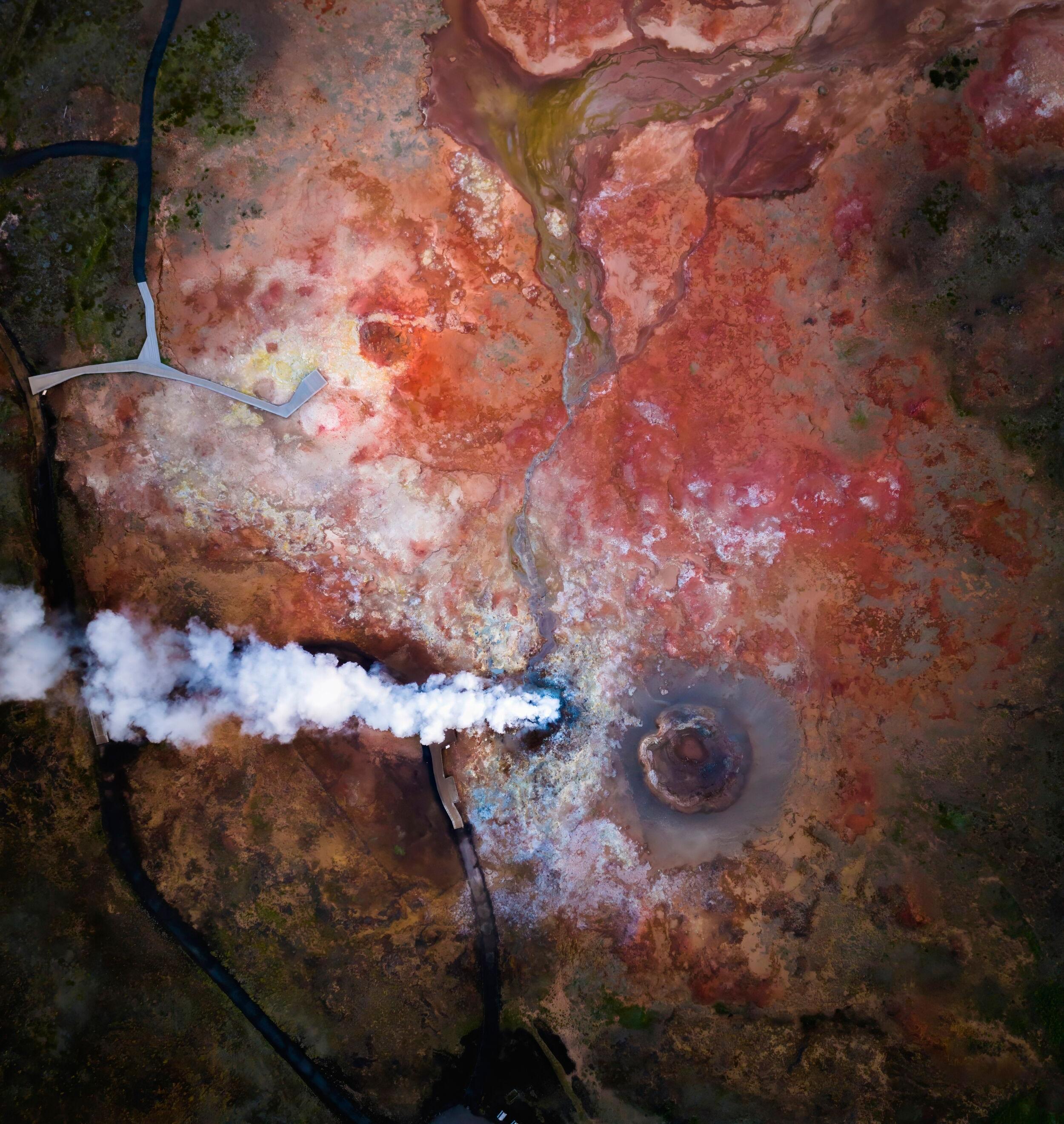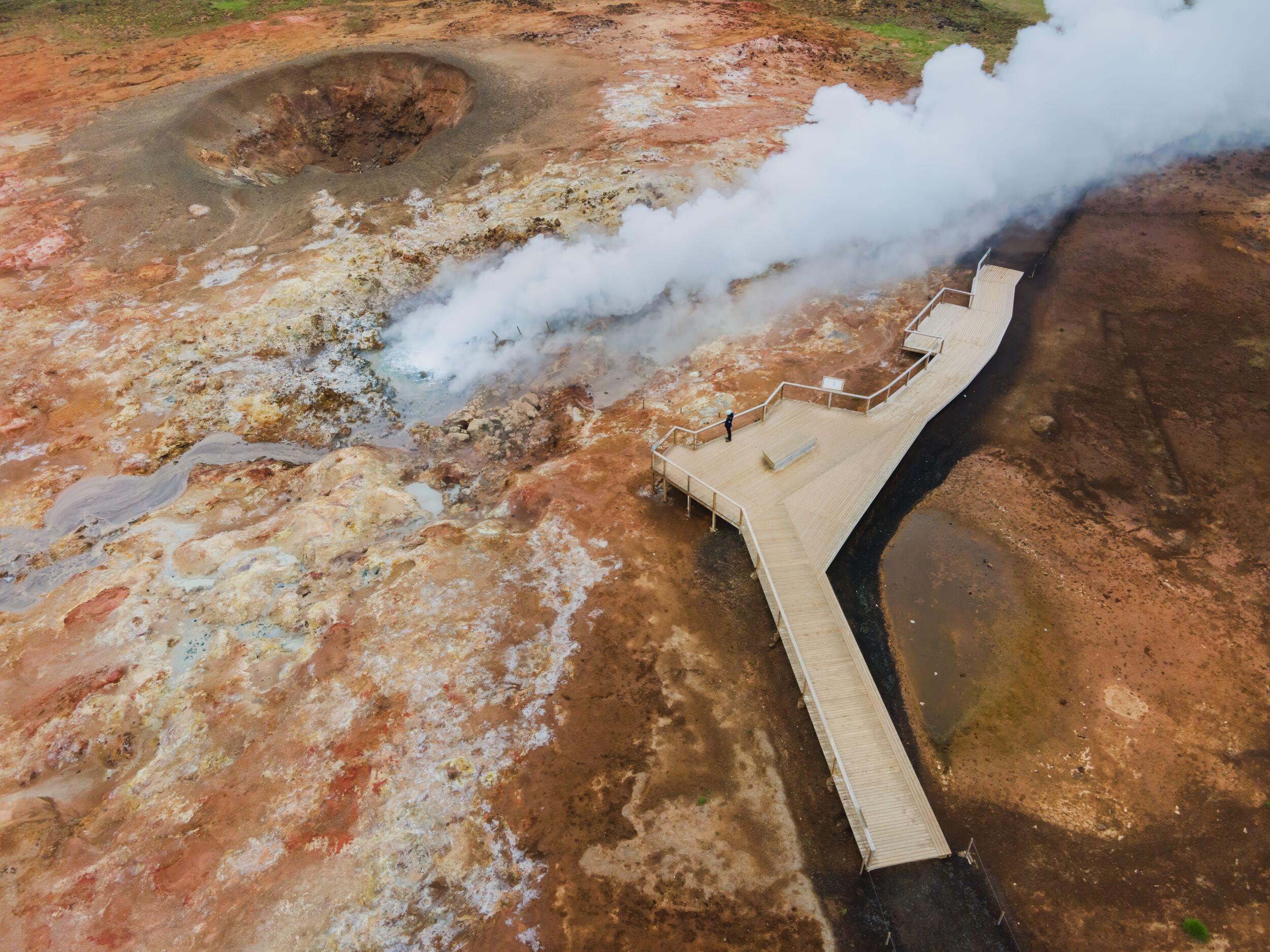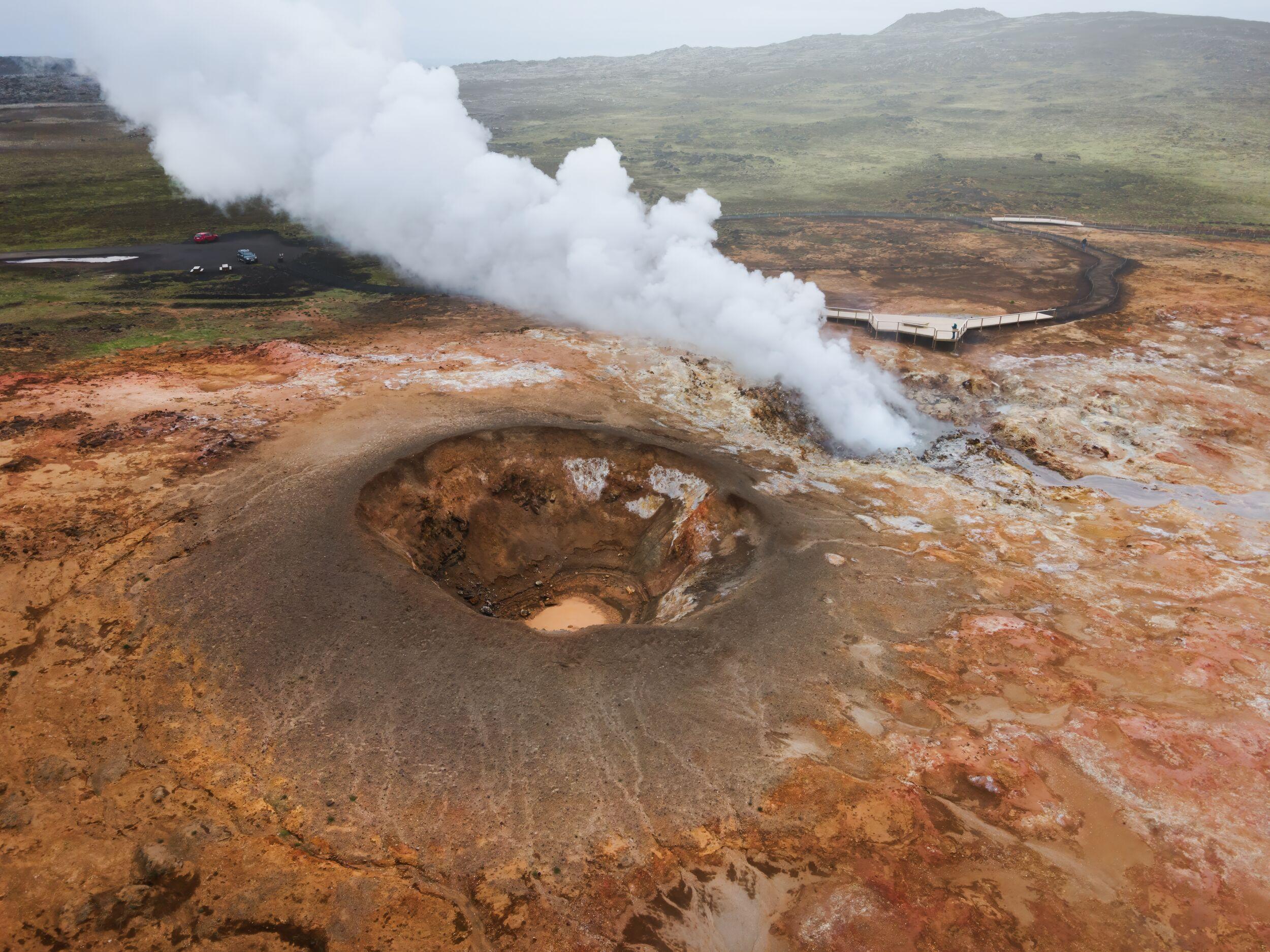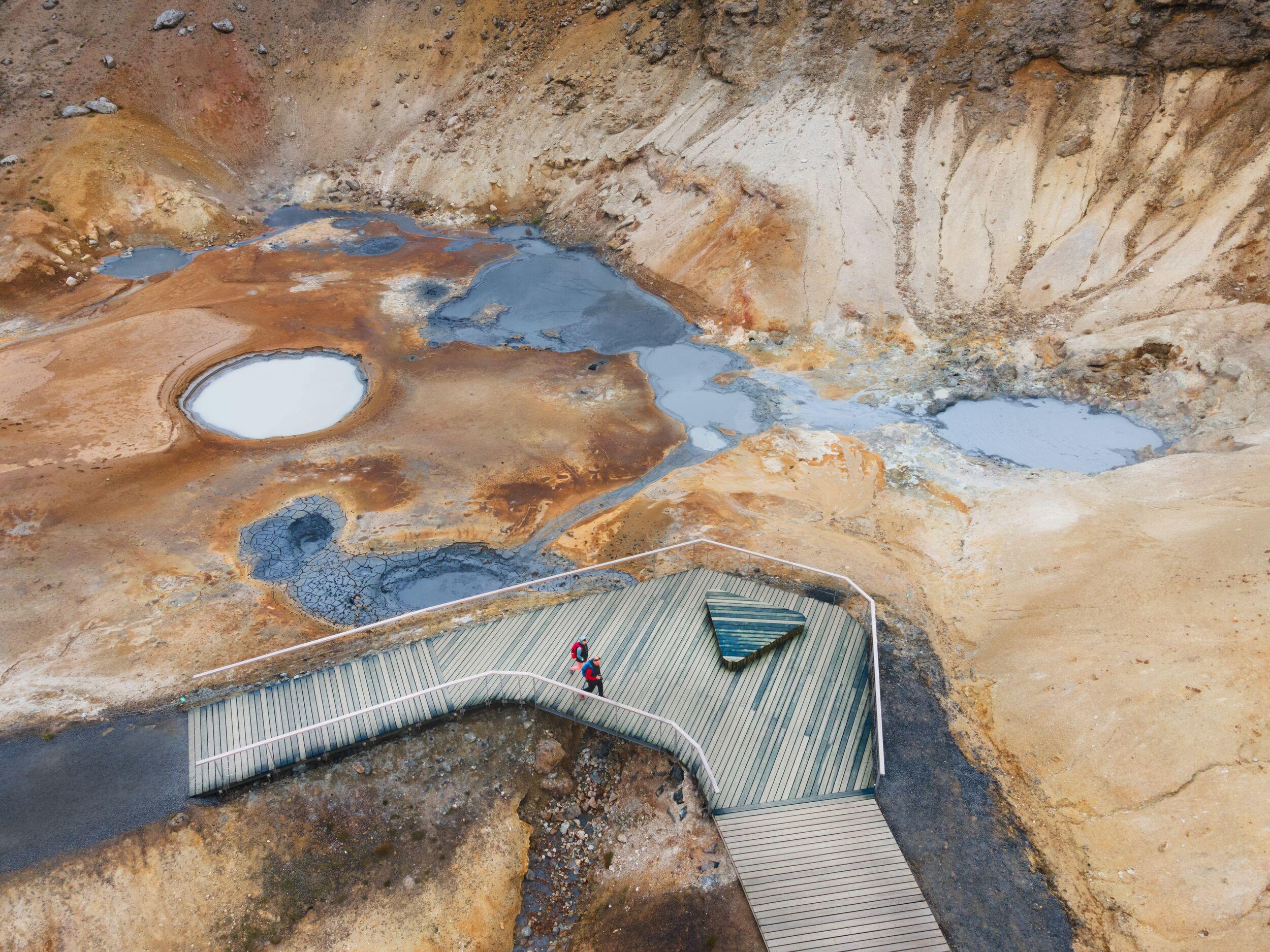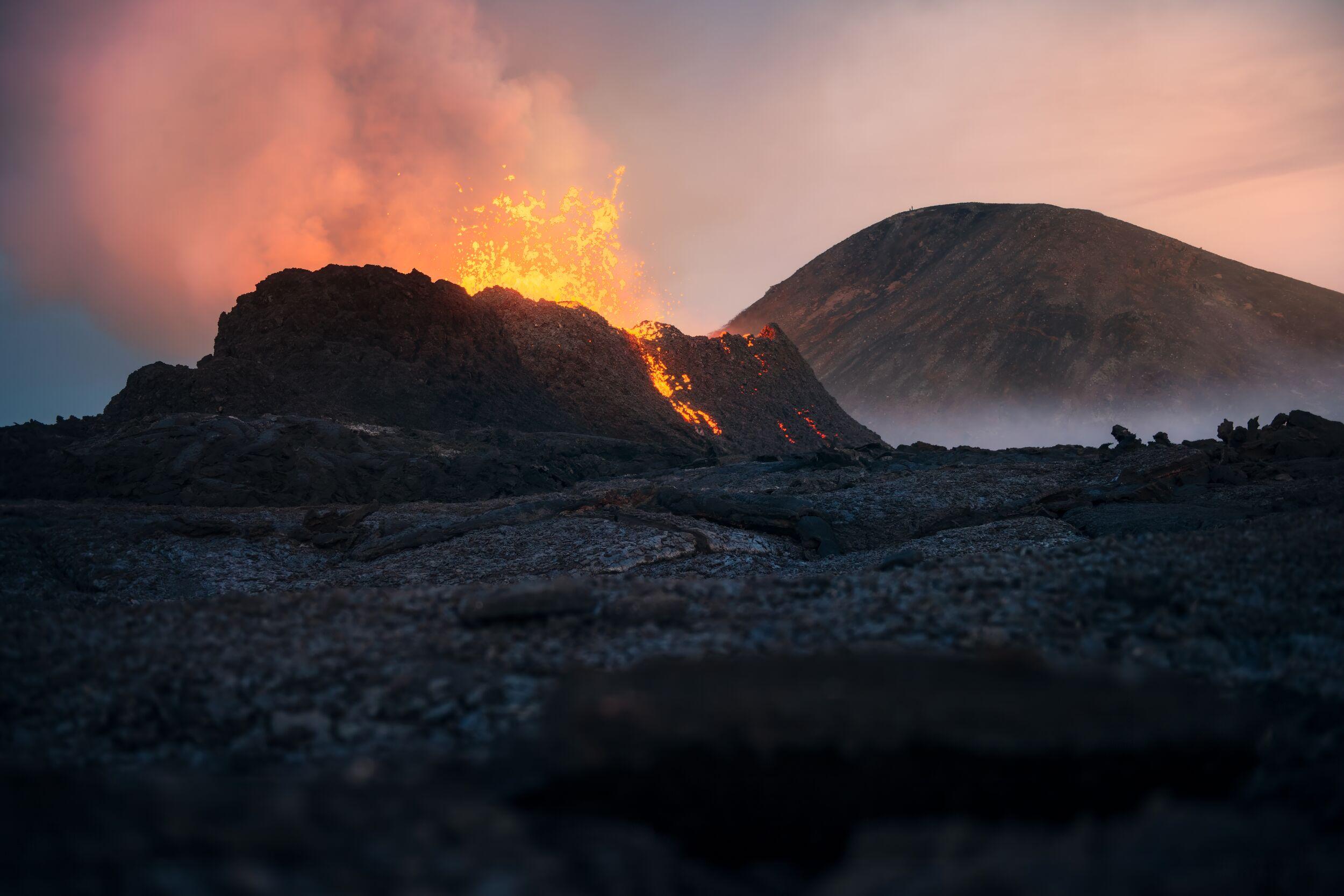
- Best time to visit
- All year round
- Coordinates
- 63.89032, -22.26936
- Distance from Reykjavík
- 57km (35mi)
Why visit Fagradalsfjall volcano?
Fagradalfsfjall’s eruption and Iceland’s volcanoes
In March, 2021, in southwest Iceland, Fagradalsfjall started erupting. Having lain dormant for 6,000 years, when scientists believe the volcano last erupted, Fagradalsfjall suddenly burst into life, spurting hot lava high into the sky. It was the first eruption in the whole area for nearly 900 years.
After six months of continuous eruption, the volcano settled down in September. Then, in 2022 Fagradalsfjall started erupting all over again. After months of tiny earthquakes sensed by scientists monitoring the site, August saw the volcano kick off once more. But this time, the eruption lasted only three weeks. Less than a year later, after a series of earthquakes, a fissure opened again and produced lava flows for three weeks.
Fagradalsfjall is one of the most recent of Iceland’s volcanoes to erupt. With over 100 volcanic systems in Iceland—and over 30 that are active—there’s an eruption in Iceland on average every 4 to 5 years. In fact, it’s one of the most volcanically active countries on the planet.
If you want to experience a world of raw volcanic power and energy, Iceland is the place for you. And there are few other places in the country where the effects can be seen so clearly.
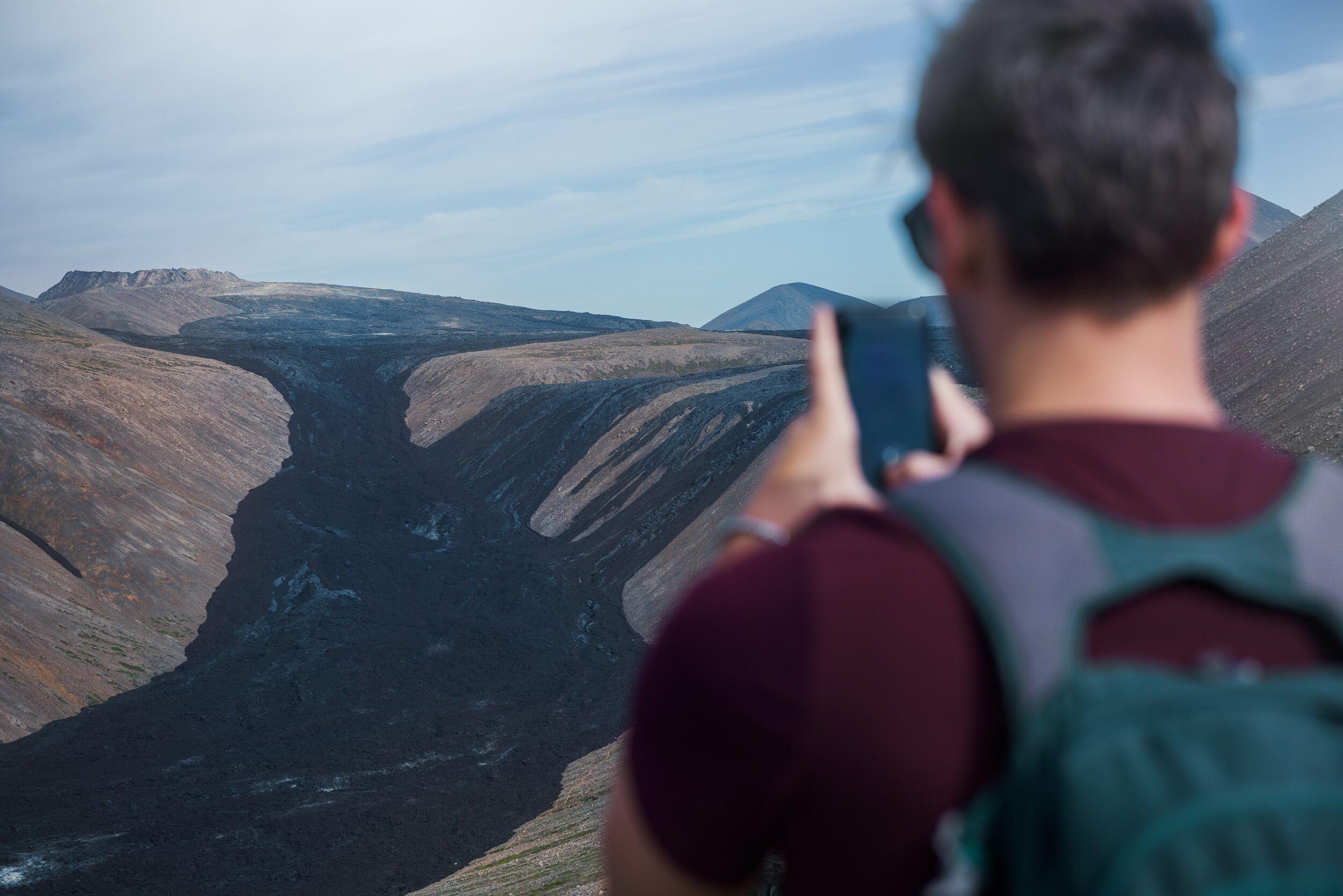
How to visit Fagradalfsjall
Apart from its awesome terrain and the fascinating impacts of volcanic activity, Fagradalsfjall has one added bonus: it’s really easy to access from Reykjavík.
Fagradalsfjall is on the Reykjanes peninsula and is less than an hour by car from the city centre. If you want a day out to see a recently erupted volcano for yourself, then Fagradalsfjall is the best opportunity.
If you’re travelling by car, take the route 41 towards Keflavík. Take the junction for route 43 towards Grindavík where you can join the 427. The car park for Fagradalsfjall is only a short distance along this road. Expect to pay a 1,000 ISK charge for parking.
Due to its popularity and the presence of multiple lava fields and eruption sites, Fagradalsfjall offers numerous hiking trails. The accessibility of the volcano and its trails can vary after each eruption and might even change daily during active phases. Therefore, it's essential to seek up-to-date information about any hiking trail in this area. Check the safetravel.is website or join our Facebook group to inquire with locals about current conditions.
For the safest, most entertaining, and informative experience, consider joining a Reykjanes/Fagradalsfjall volcano tour. Expert local guides will collect you from downtown Reykjavík and take you on a guided tour around this fascinating UNESCO Global Geopark, ensuring you reach the eruption area safely. It's an excellent opportunity to gain a unique understanding of the volcano while eliminating the challenges of gathering information, planning, and driving!
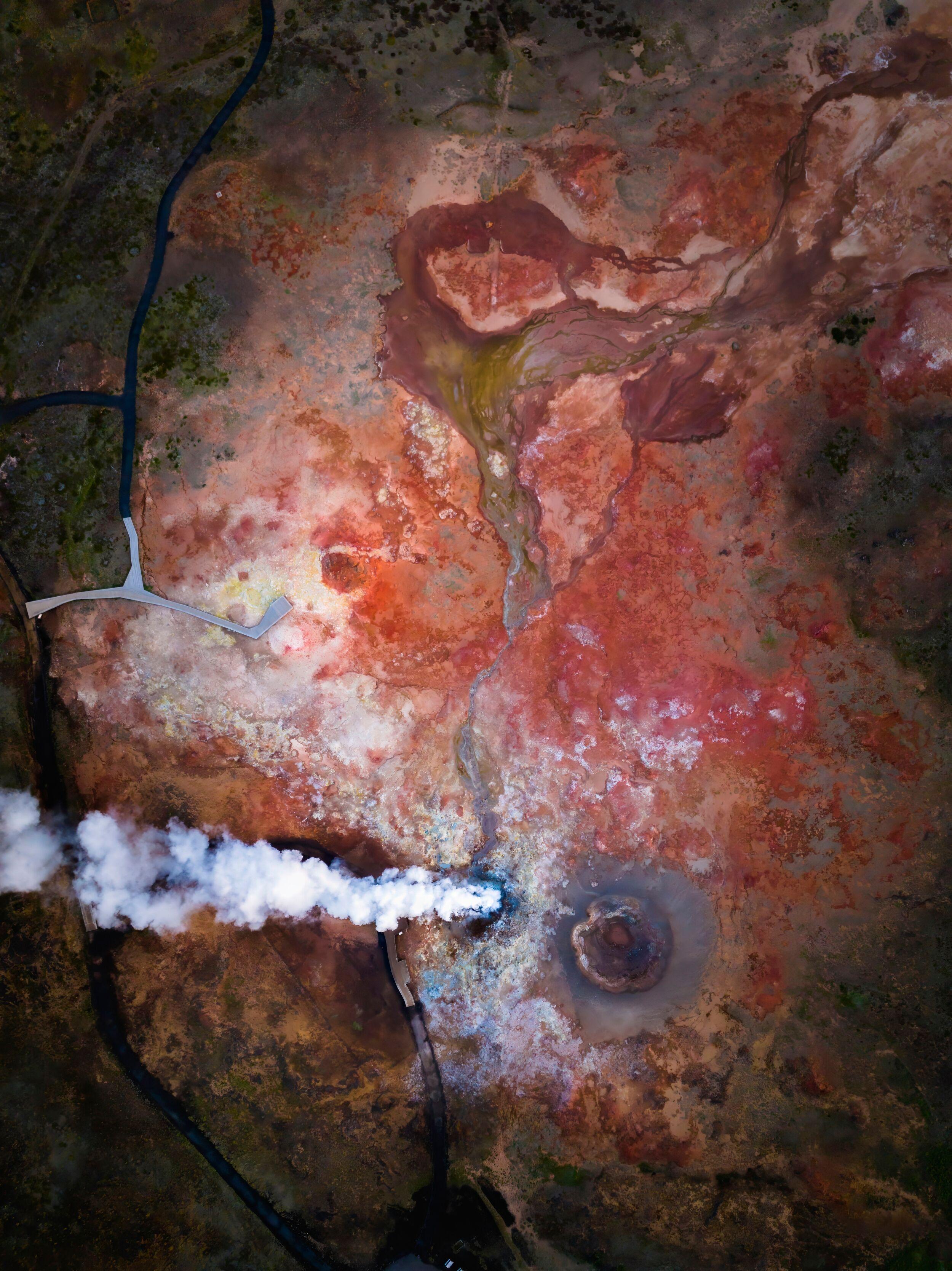
What to see around Fagradalfsjall
Set in the centre of a UNESCO Geopark, there are many more things to see and do around Fagradalsfjall. From hiking trails to iconic sights and volcanic wonders, you’ll find plenty to keep you inspired, no matter how you like to travel.
Visit Gunnuhver, a captivating geothermal area where the earth's warmth manifests as steam billowing from springs and bubbling mud pools. According to local lore, this mysterious place is haunted by the ghost of a woman named Gunna, whose tragic tale has left her spirit wandering the grounds for centuries.
Nearby is the renowned Bridge Between the Continents. As its name implies, this bridge symbolically connects the North American and Eurasian tectonic plates. You can walk across this bridge, experiencing the Mid-Atlantic Ridge above sea level, which is the boundary between these two major plates. This tectonic activity plays a significant role in Reykjanes' geothermal and volcanic characteristics.
While you’re here, visit the coast of the Reykjanes peninsula. It’s an impressive world of high cliffs, seabirds, and complex rock formations. For example, you can see Brimketill, a small pool carved by water erosion that was once thought to be occupied by a local giantess, Oddný.
Reykjanestá is a rugged, dramatic coastline located at the southwestern tip of the Reykjanes Peninsula. Its sheer cliffs and unique rock formations, carved by the relentless power of the North Atlantic Ocean, offer a stark contrast to the geothermal activity found inland on the peninsula.
Nearby is the Reykjanesviti, Iceland's oldest lighthouse. Overlooking the turbulent waves of the North Atlantic, this iconic beacon has been guiding ships since 1878 and stands as a testament to the maritime heritage of the region.
Just a few kilometers from Fagradalsfjall is the famous Blue Lagoon, one of Iceland's most renowned geothermal spas. Known for its milky blue waters rich in minerals, it offers a therapeutic experience amidst a surreal lava landscape. Visitors can indulge in rejuvenating treatments, making it a must-visit for relaxation and wellness.
The lagoon's warm waters, which are naturally heated by volcanic activity, draw tourists from all over the world. Its unique setting and healing properties have solidified its status as a top Icelandic attraction.
During an active eruption at Fagradalsfjall, the radiant glow of red lava lights up the sky, with volcanic plumes ascending into the atmosphere. After a day of witnessing such spectacular volcanic displays, what could be more perfect than unwinding in the geothermal waters of the Blue Lagoon, nestled amidst a moss-covered lava field?
Don’t worry about navigating between these different sights all by yourself. Instead, on a tour of the Reykjanes peninsula, you can see the best of the region and meet like-minded travellers along the way.
Frequently asked questions
There are currently no bathrooms available at Fagradalsfjall.
Fagradalsfjall is where you can see the raw power of the earth on display. There are few other places on Earth where you can witness the transformative power of volcanoes.
But the appeal isn’t just the volcano itself. On your hike, you’ll enjoy some of the most stunning views in all of Iceland.
If you’re visiting by yourself, you do not have to pay to enter the Fagradalsfjall area. However, there is a 1,000 ISK charge for the car park.
Alternatively, if you are visiting with a tour, the cost of transportation and your guide will all be included in the price. Explore individual Fagradalsfjall volcano tour pages for up to date pricing.
Yes, you can hike to Fagradalsfjall volcano during the summer months when Iceland experiences 24 hours of daylight. However, from September to April, the nights are dark, making conditions potentially challenging and even hazardous when snow and ice covers the trail. For safety reasons, we strongly advise against attempting nighttime hikes during these months.
No, it is not permitted to walk on the lava at Fagradalsfjall. The surface layer can be fragile and susceptible to breaking, potentially exposing fresh, molten lava beneath. It's crucial to prioritize safety and avoid walking on the lava.
When you visit the Fagradalsfjall eruption site, please remember that it’s a living geological site, so treat it with respect.
Yes, you can see lava at Fagradalsfjall. The volcano erupted in 2021, 2022, and 2023, with each eruption lasting for a few weeks or months. Experts predict that Fagradalsfjall will continue its pattern of erupting on and off for the coming decades. Depending on the timing of your visit, you might encounter an active eruption with flowing lava, or you might see recently solidified lava from past eruptions. While witnessing active lava flows is undoubtedly mesmerizing, exploring the freshly solidified lava fields is also a unique and awe-inspiring experience. There are guided tours available that specifically take visitors to these new and transforming landscapes.
You can visit Fagradalsfjall independently, without a tour or guide. If you have a car and you’re an able walker, it’s easy to visit by yourself. However, the accessibility of the volcano and its trails can vary after each eruption and might even change daily during active phases. Therefore, it's essential to seek up-to-date information about any hiking trail in this area. Check the safetravel.is website or join our Facebook group to inquire with locals about current conditions.
If you don’t have a car, a guided tour is by far the easiest way to reach Fagradalsfjall. You’ll be picked up from Reykjavík city centre and we’ll take you to the trailhead. You’ll also benefit from local expert knowledge from your guide too.
While hiring a guide isn't necessary for visiting Fagradalsfjall, it can significantly enhance your experience. They offer expert insights, ensure your safety, and highlight key spots. Additionally, they provide convenient transportation to Fagradalsfjall. However, if you prefer exploring independently, renting a car allows you to move at your own pace and navigate to Fagradalsfjall's lava fields on your own.
When Fagradalsfjall is erupting, children under 12 are not permitted to visit the eruption site due to dangerous gases. However, when the volcanic activity is on a pause, they’re more than welcome. Just remember, the trek can take up to 6 hours.
A visit to the Fagradalsfjall eruption site is a thrilling way to see the power of Iceland’s volcanoes. You can visit on foot from the Fagradalsfjall car park in the centre of the Reykjanes UNESCO Global Geopark.
The car park is open 24 hours a day. If you want to visit with a guide, explore our tours for the option that suits you.
Fagradalsfjall erupted in 2021, 2022 and 2023. No further eruption has been seen since 2023 August. That said, Fagradalsfjall is monitored very closely and may well erupt again soon.
Hiking to Fagradalsfjall can be safe for individuals who are reasonably fit and take necessary precautions. It's essential to be well-informed about the weather and current conditions, be adequately prepared, have the appropriate gear and clothing, and strictly adhere to guidelines. Respecting closures, staying on designated trails, and avoiding hiking on solidified lava are also crucial for ensuring safety.
The accessibility of the volcano and its trails can fluctuate following each eruption and might even shift daily during active periods. Some trails can be quite extensive, reaching up to 20 km (approximately 12.4 miles), while others are shorter and more leisurely. It's crucial to obtain current information about any hiking trail in this region. Consult the safetravel.is website or join our Facebook group to discuss with locals about the latest conditions.
Ultimately, you will need to be reasonably fit to complete any hike in this area. You’ll also need sturdy boots, as you’ll be walking over rocky and unstable terrain. We discourage anyone from hiking here in the wintertime without local guidance.
The accessibility of the volcano and its trails can fluctuate following each eruption and might even shift daily during active periods. Some trails can be quite extensive, reaching up to 20 km (approximately 12.4 miles), while others are shorter and more leisurely. It's crucial to obtain current information about any hiking trail in this region. Consult the safetravel.is website or join our Facebook group to discuss with locals about the latest conditions.
Ultimately, you will need to be reasonably fit to complete any hike in this area. You’ll also need sturdy boots, as you’ll be walking over rocky and unstable terrain. We discourage anyone hiking here in the wintertime without local guidance.
When you take the Fagradalsfjall hike, you will be walking on rough, unstable volcanic terrain. You should definitely come prepared with robust, comfortable, and sturdy shoes with plenty of grip.
You should also be aware of the weather conditions when you visit. Icelandic weather can be quite unpredictable, so even if it’s sunny when you set off, it’s always best to bring a rain jacket.
Related tours
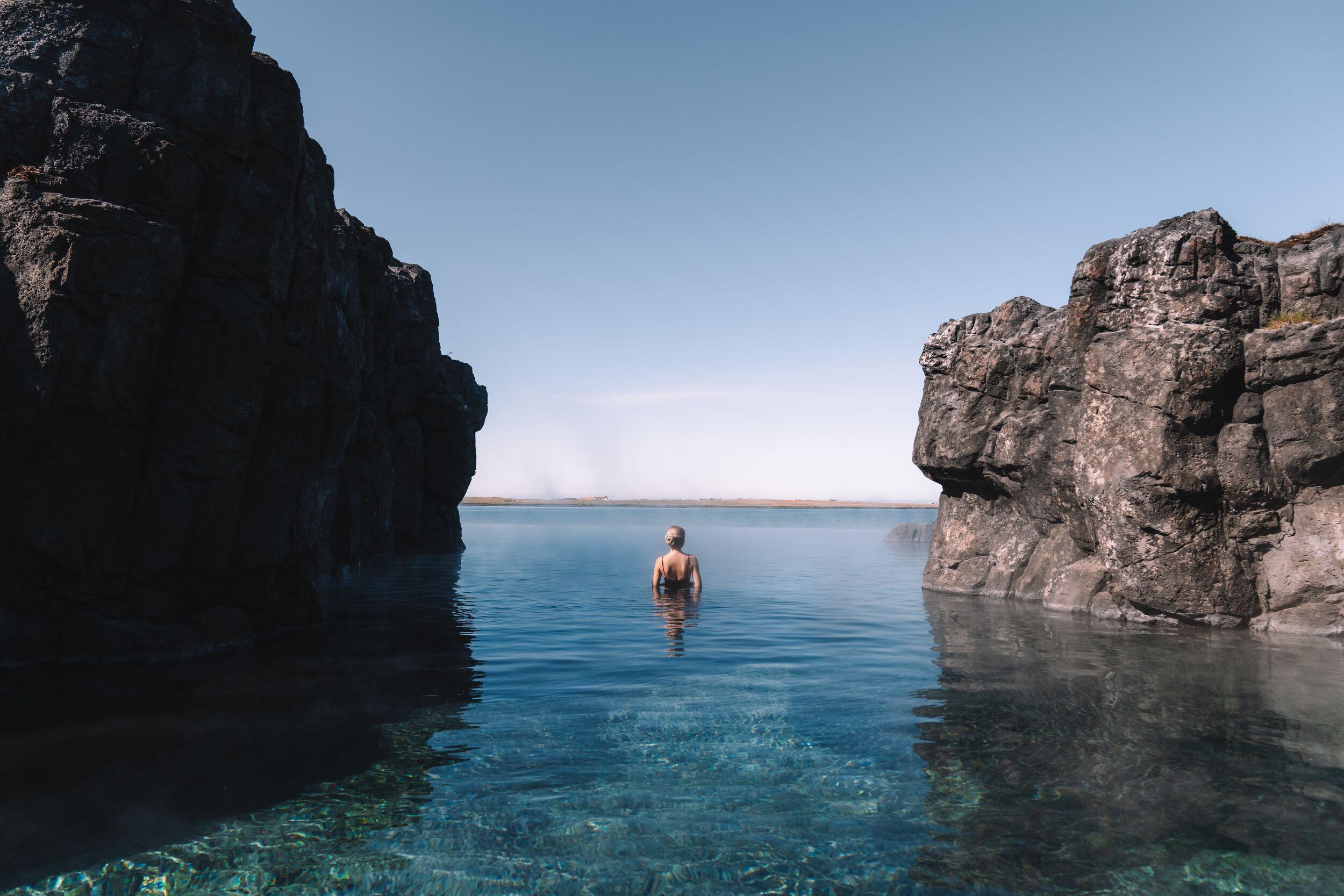
Volcanic Wonders with Grindavík Visit & the Sky Lagoon
Discover Iceland’s geothermal heart in the UNESCO-recognized Reykjanes Geopark, where continents meet and drift apart. Explore a vibrant geothermal area, hike to freshly-formed lava fields, and visit the resilient fishing village of Grindavík. This carbon-neutral journey ends with pure relaxation at Reykjavík’s Sky Lagoon, where you can soak in warm waters and unwind with a luxurious spa ritual.
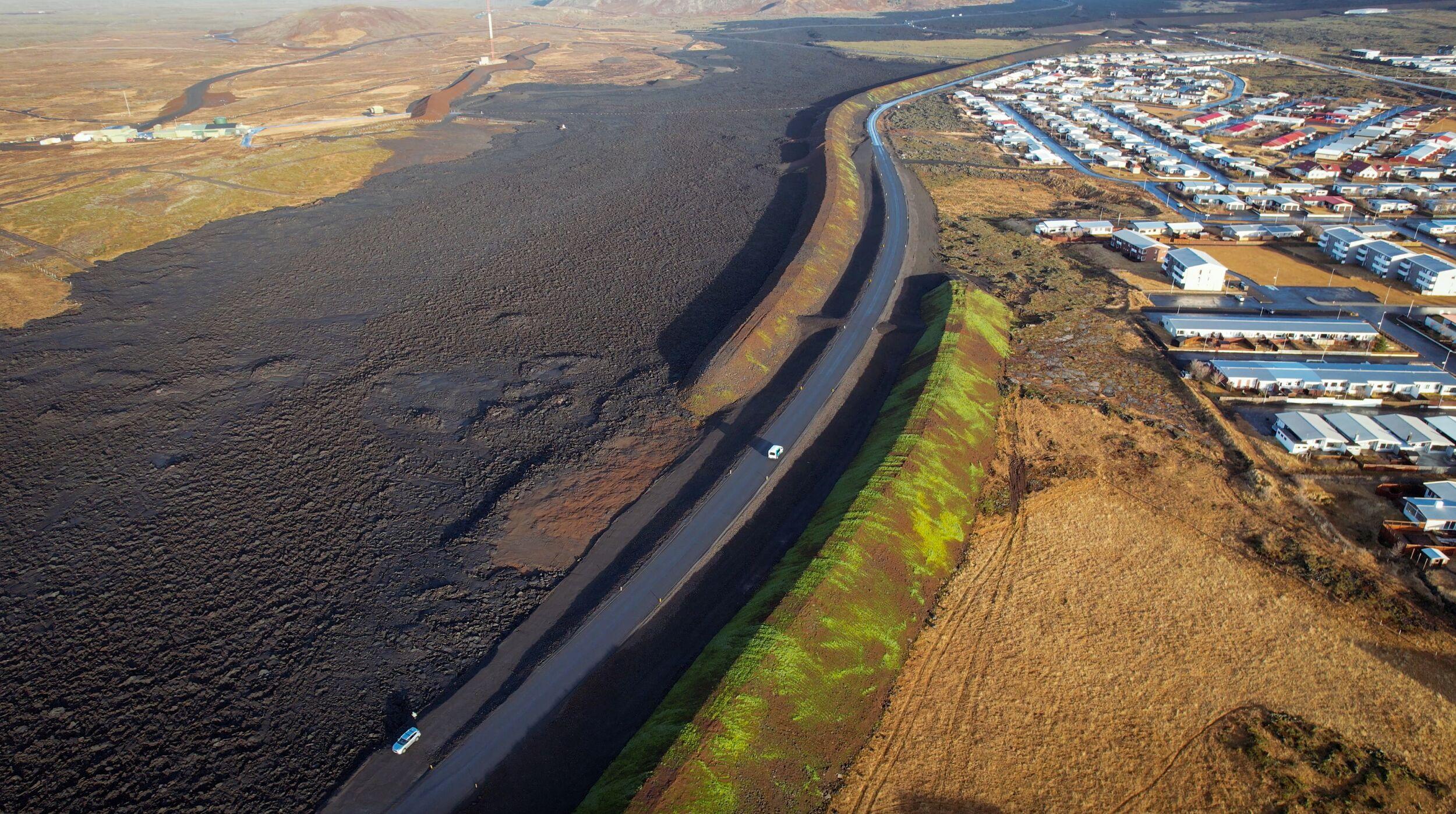
Volcanic Wonders with Grindavik Visit
Once a bustling fishing village, Grindavík now serves as a stark reminder of nature’s relentless power. After a recent volcanic eruption forced the evacuation of its residents, much of the town remains uninhabitable, its landscape forever marked by the destructive forces of the earth.
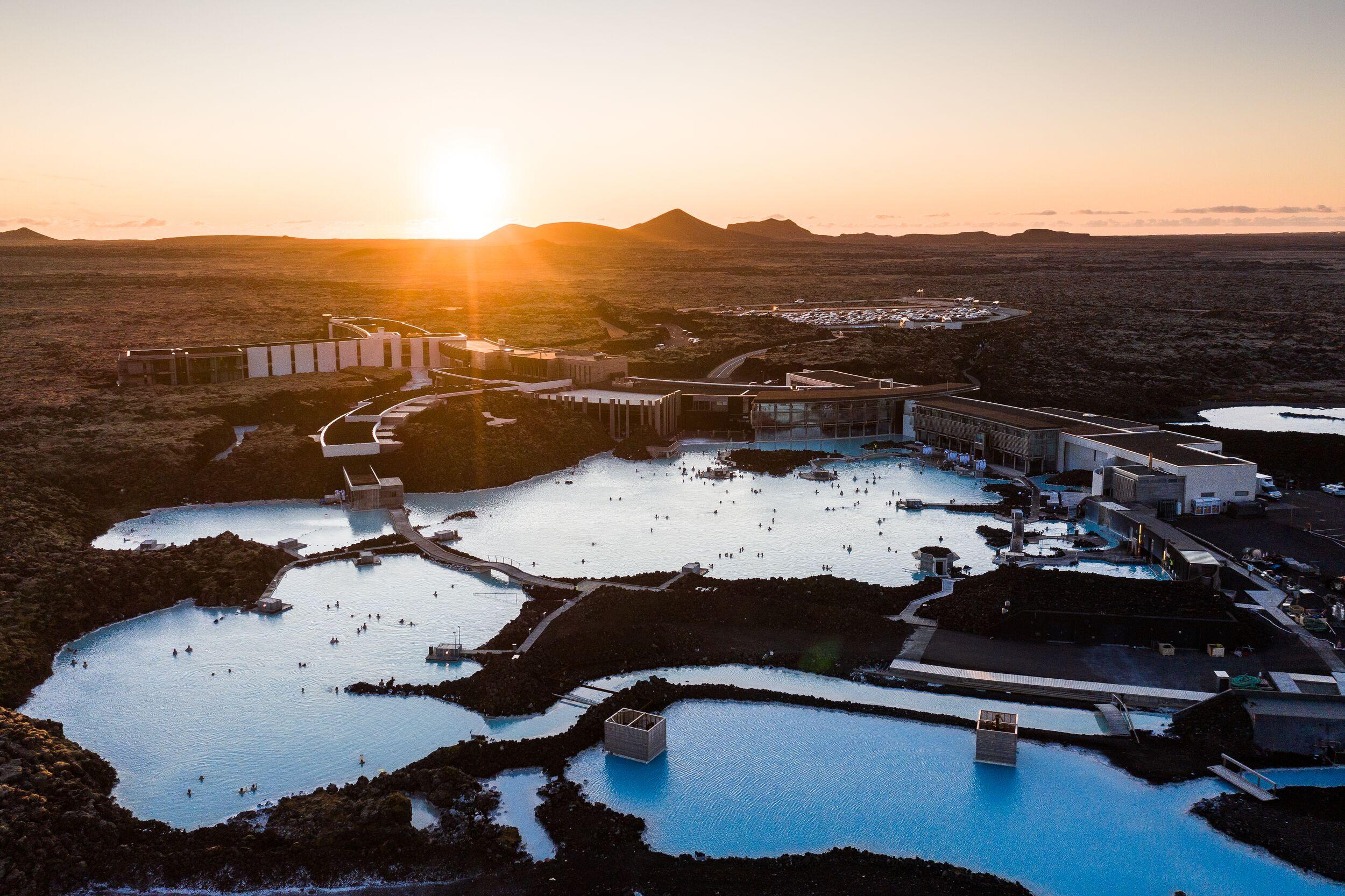
Volcanic Wonders with Grindavik Visit & the Blue Lagoon
Embark on a carbon-neutral journey through Iceland’s stunning volcanic landscapes. Enjoy a refreshing hike across a lava field, formed by recent eruptions, and then unwind with a soothing soak in the healing geothermal waters. This perfect combination of adventure and relaxation offers an unforgettable way to experience the raw power and serene beauty of Iceland’s natural wonders.
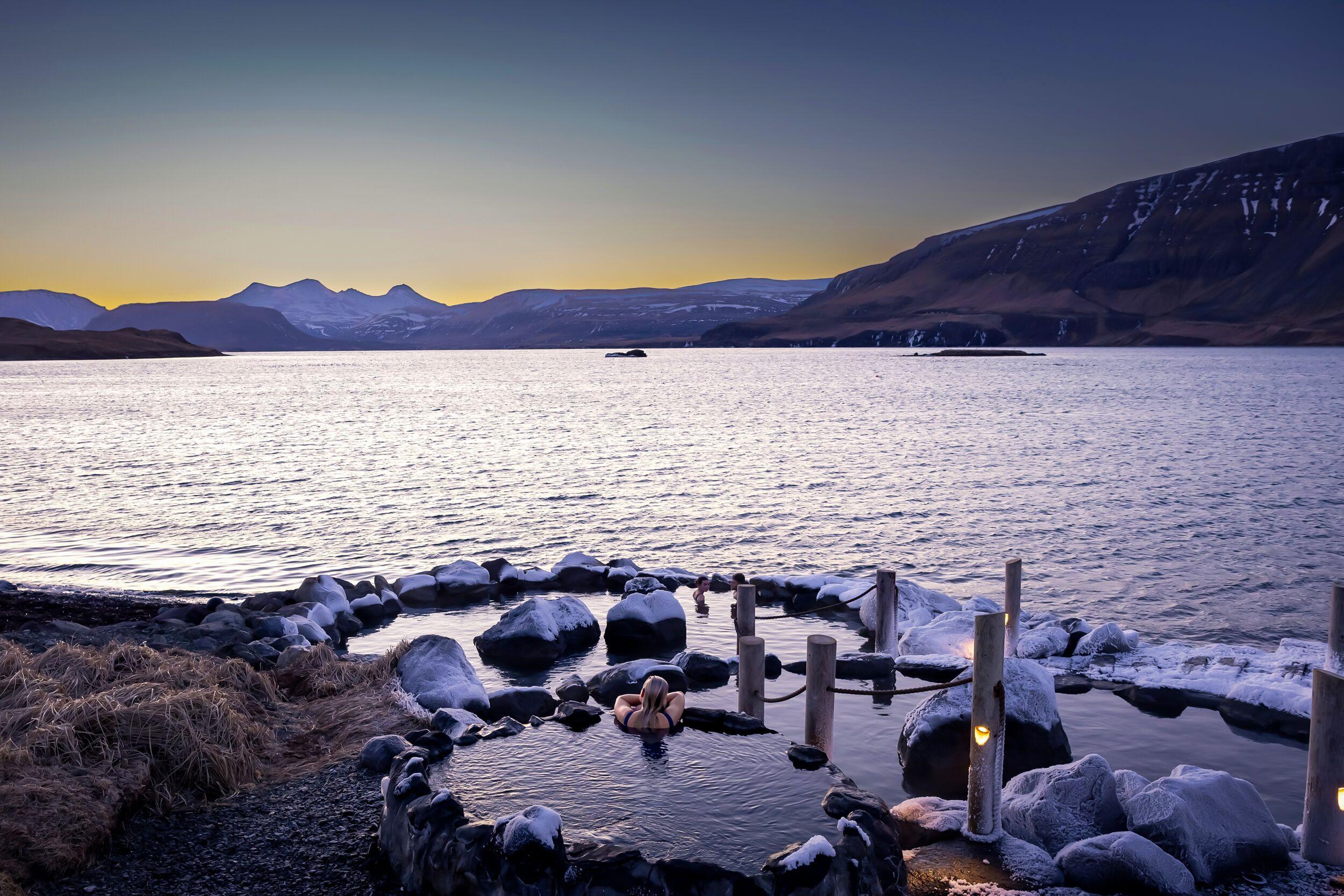
Volcanic Wonders with Grindavik Visit & the Hvammsvík Hot spring
Discover Iceland’s geothermal wonders in the UNESCO-recognized Reykjanes Geopark, a dramatic landscape where continents drift apart. This carbon-neutral journey takes you through vibrant geothermal fields, new lava fields, and the village of Grindavík, before concluding with a serene soak at Hvammsvík Hot Springs.


